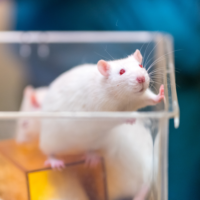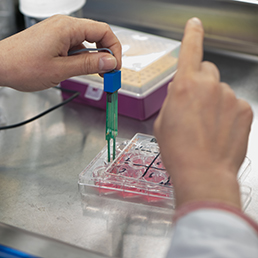The journey from the lab to practical application is complex. As a result, many promising animal-free innovations often fail to reach implementation. To change this, ZonMw launched the NAM Navigator on April 3rd: a practical online guide that provides insight into the path an animal-free model takes from development to implementation.
*NAM: New Approach Methodology. NAMs are scientific models, such as organoids and organs-on-chips, based on human cells.
The NAM Navigator: one tool, clear overview
The NAM Navigator is an interactive online tool that shows step-by-step how an animal-free model (like an organ-on-chip or organoid) progresses from development to regulatory acceptance. It’s useful for anyone working on human-focused innovations without animal testing. The tool highlights both opportunities and common obstacles.
ZonMw launched the Navigator on April 3rd to accelerate the transition to animal-free innovation — something that’s urgently needed.
Why this tool is essential for researchers and policymakers
There’s already a huge amount happening worldwide in animal-free innovation. A lot of valuable information is out there, but it’s scattered across various websites, papers, and platforms from different organizations and researchers.
What’s missing is one central place where all of it can be easily accessed. That’s exactly why the NAM Navigator was developed. It’s a hub for information on how to validate animal-free models and how they can be integrated into laws and regulations.
In short, the NAM Navigator helps scientists, policymakers, and regulatory bodies to:
-
Gain a better understanding of the steps needed for validation and implementation
-
Consolidate existing knowledge
-
Lower barriers to broader acceptance of NAMs
The end goal: human-relevant research models that make a real difference — without animal testing.

The path from lab to policy is not a straight line
The discovery or publication of an animal-free study is not the final stop. The journey continues: alternatives must be standardized and validated before they’re accepted by regulatory authorities and can be put to use.
Validation, though essential, is a demanding and complex process. Without recognized validation, even the most promising organoids or organ-on-chips remain stuck in research. Yet we know human-based models often offer better predictive value than traditional animal testing.

The system must change too
If we truly want science to take the human body as its starting point, choosing human-relevant models is the logical step. This requires systemic change—exactly what the NAM Navigator aims to drive.
This knowledge base is a tool that:
-
Provides clarity in the complex world of NAMs
-
Accelerates the path to acceptance
-
Contributes to replacing animal testing in safety research and drug development
Take the next step – start with the NAM Navigator
Whether you’re developing an animal-free model or just curious about what’s available, the NAM Navigator offers insight, direction, and opportunity. Discover how you can help shape the next step in science that benefits both people and animals.
Source: ZonMw



